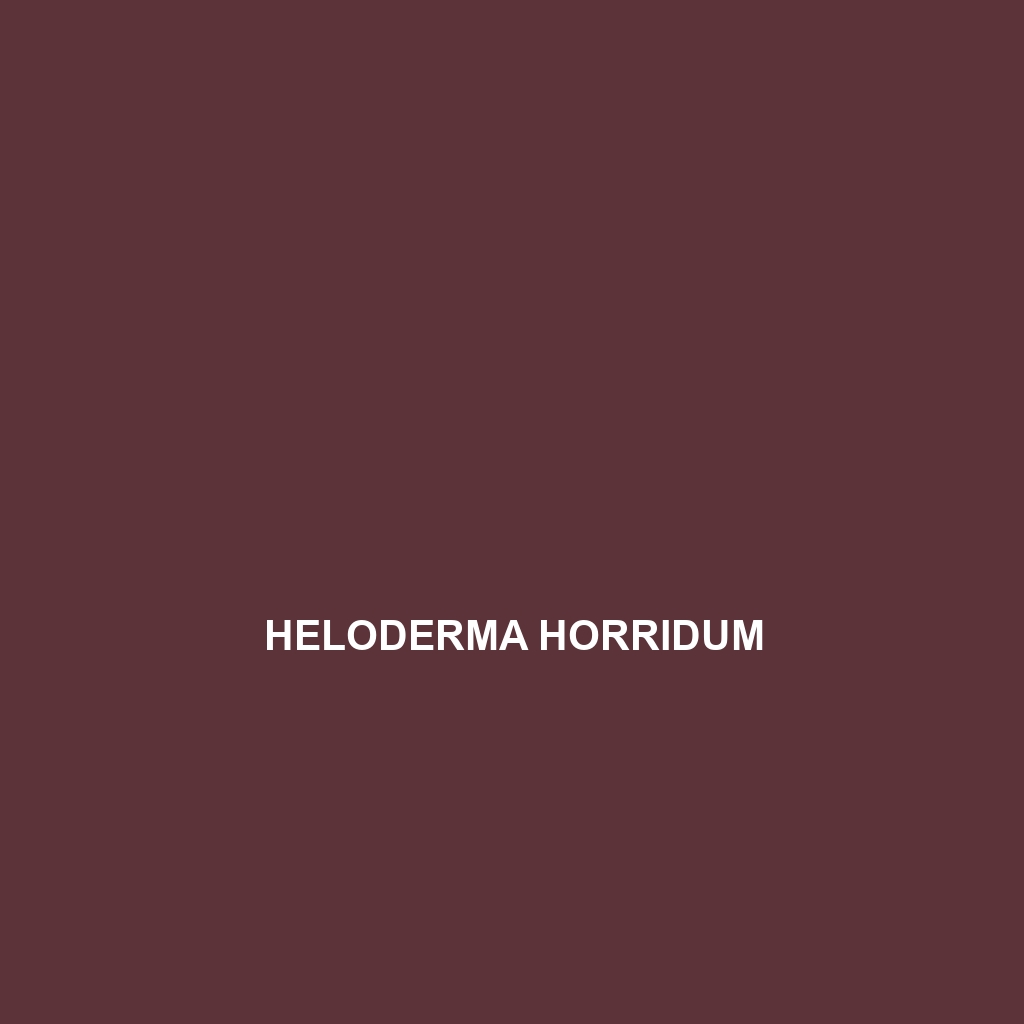Common Name
Heloderma horridum
Scientific Name
Heloderma horridum
Habitat
The Heloderma horridum, commonly known as the Gila monster, inhabits various environments across the southwestern United States and northwestern Mexico. This species is primarily found in arid and semi-arid regions, including deserts, scrublands, and rocky hillsides. Specifically, it thrives in areas characterized by low elevations and warm temperatures, often located within desert regions where vegetation such as cacti, shrubs, and small trees are abundant. Additionally, the Gila monster is occasionally found in temperate forests and savannas, where the climate allows for suitable shelter and food sources. This reptile prefers habitats with ample ground cover, which provides protection from predators and harsh environmental conditions.
Physical Characteristics
The Gila monster is one of the few venomous lizards, renowned for its distinct physical appearance. Adults typically measure between 20 to 26 inches (50 to 66 cm) in length, with a robust body and thick tail. Their skin is covered with smooth, bead-like scales which are often a striking combination of black with orange or yellow banding, creating a vivid and recognizable appearance. One of the unique features of Heloderma horridum is its large head and broadened snout, which aid in burrowing and hunting. Additionally, their venomous bite is not only famed for its potency but also for the unique way it is delivered; glands in their lower jaws release venom through grooves in their teeth when they bite.
Behavior
Heloderma horridum exhibits fascinating behaviors that contribute to its survival in harsh environments. Primarily nocturnal, this reptile is most active during cooler night hours to avoid the extreme heat of the day. During the daytime, it often spends time hidden in burrows or under rocks. The Gila monster is known for its solitary nature, but during mating season, males may engage in physical displays of dominance, including wrestling matches. Additionally, these lizards possess a unique habit of storing fat in their tails, allowing them to survive extended periods without food.
Diet
The Gila monster is an omnivore, with a diet that primarily consists of small mammals, birds, and their eggs, as well as insect larvae and carrion. This species has a slow metabolism, allowing it to thrive on infrequent meals, which can occur several times a month. Their predatory nature is complemented by their ability to detect scents, leading them to food sources. They are also known to consume the eggs of various animals, showcasing their adaptability in foraging.
Reproduction
Reproductive activities in Heloderma horridum typically occur between April and June, with females laying eggs in late summer. A typical clutch consists of 2 to 7 eggs, which are deposited in a warm, safe environment to ensure proper development. The eggs incubate for about 3 months, with hatchlings emerging in late summer or early fall. The offspring measure approximately 8 to 10 inches (20 to 25 cm) in length upon hatching. Parental care is minimal; however, female Gila monsters may stay near their eggs until they hatch to protect them from potential predators.
Conservation Status
The conservation status of Heloderma horridum is currently classified as Near Threatened by the International Union for Conservation of Nature (IUCN). Main threats to this species include habitat destruction due to urbanization, agriculture, and road construction. Moreover, illegal poaching for the pet trade poses a significant risk. Conservation efforts are pivotal in safeguarding the environments in which these lizards live, alongside public awareness campaigns to educate about their ecological importance and legal protections.
Interesting Facts
One of the most captivating aspects of Heloderma horridum is its unique defense mechanism. When threatened, it will hiss, puff up its body, and display its venomous bite, a tactic that deters most predators. Additionally, the Gila monster’s venom is not lethal to humans but can cause severe pain and swelling if bitten, making it critical for individuals to exercise caution. Another interesting adaptation is the presence of a forked tongue, which they use to sample the environment similarly to snakes, allowing them to detect scent particles effectively.
Role in Ecosystem
Heloderma horridum plays a significant role in its ecosystem as both a predator and a scavenger. By controlling populations of small mammals and insects, it helps to maintain balance in the food web. Furthermore, their scavenging behaviors contribute to the decomposition process, aiding nutrient cycling within their habitat. As a beautiful creature with unique characteristics, the Gila monster also draws ecological interest, making it a key species for studying biodiversity and conservation.
